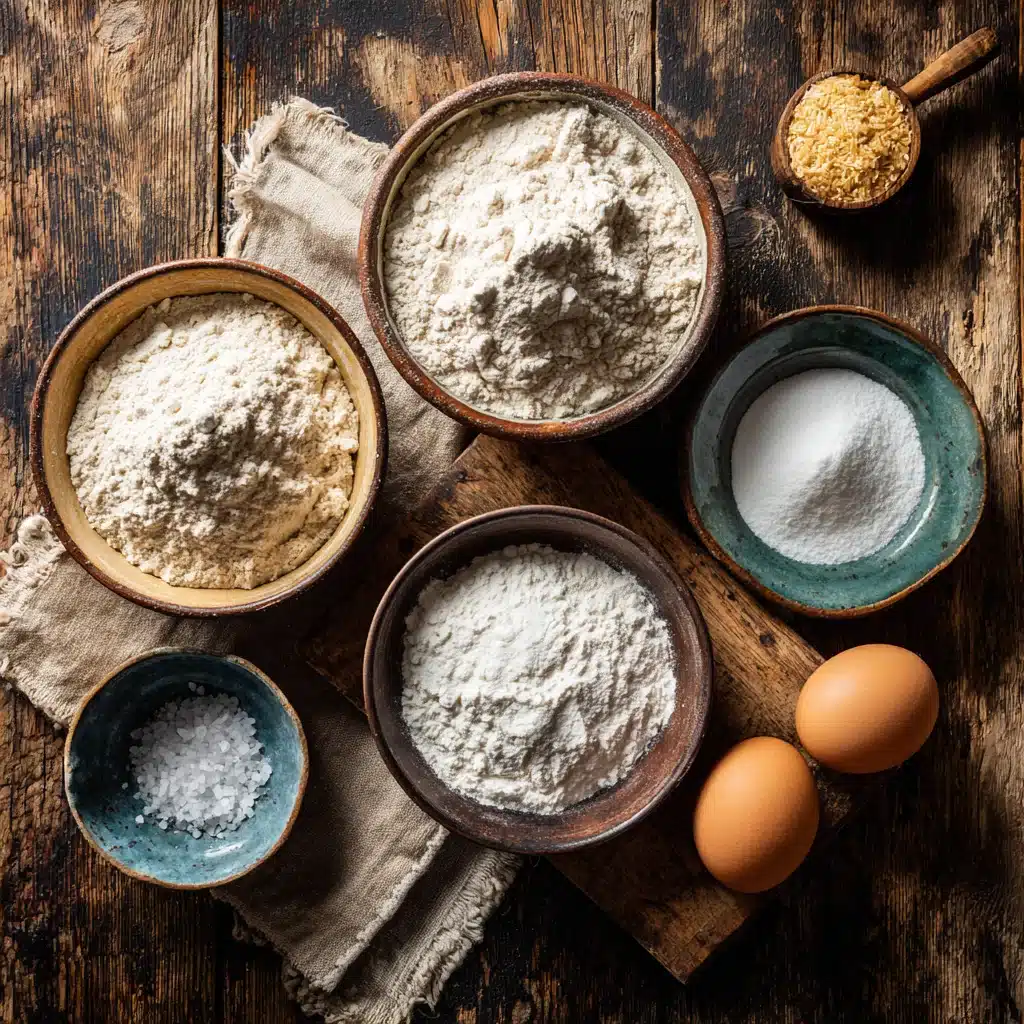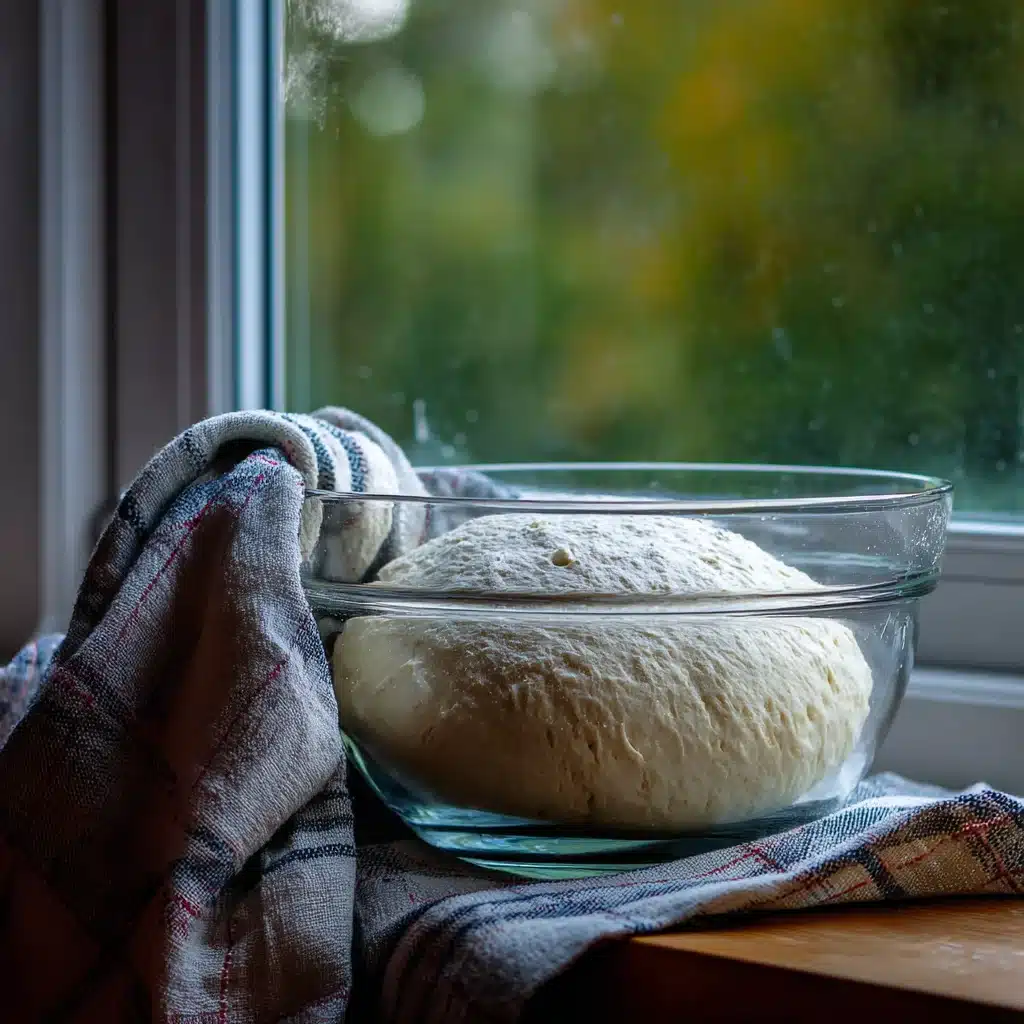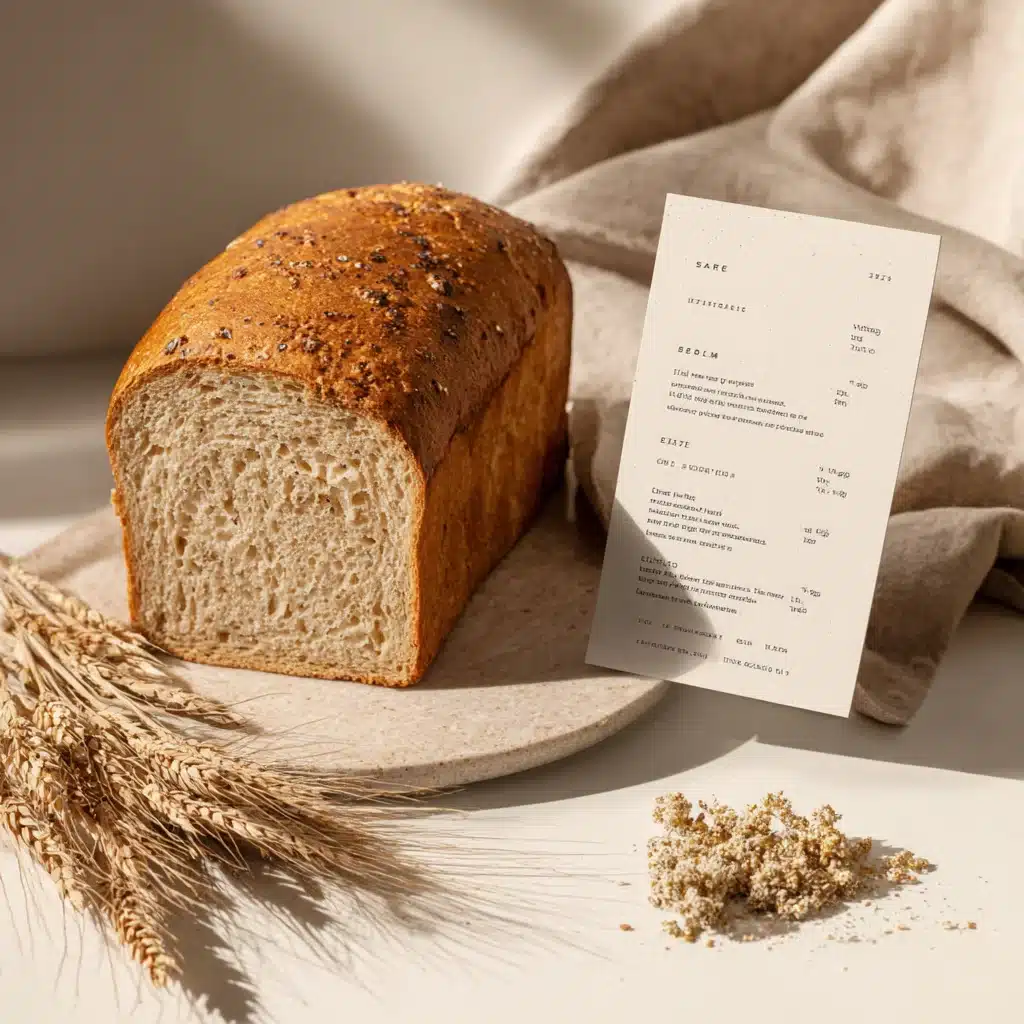White bread might be a pantry staple, but it sparks heated debates about health, nutrition, and tradition. From school lunches to diner toast, it’s everywhere, but is white bread actually good for you? In this article, we’ll break down the truth behind white bread: its ingredients, whether it’s healthy, what makes it different from other breads, and even what “white bread” means in slang. You’ll also get tips on baking better bread at home and which loaves are healthier choices. Whether you’re a curious eater or a baker in progress, this guide answers it all.
Is It Really That Bad? My White Bread Beginning
My First Homemade Sandwich Loaf
When I first learned to bake bread, I wasn’t chasing rustic sourdoughs or hearty rye. I just wanted the kind of soft, pale loaf I remembered from childhood lunches, the stuff that held peanut butter and jelly like a dream. The smell alone could stop me in my tracks.
But that first attempt was a disaster. My dough collapsed mid-bake, and the crust turned out leathery instead of light. Still, something clicked. That mess of flour and steam ignited a passion. Over time, in my little Mendocino kitchen, with salty air swirling through the window, I started baking every weekend. That early flop led me to Clementine, my trusty sourdough starter.
Even now, as I teach others how to craft their own homemade loaves, I tell them: don’t skip the failures. They teach more than recipes ever could.
Print
White Bread Truth – 5 Shocking Facts That Will Surprise You
- Total Time: 2 hours
- Yield: 1 loaf 1x
- Diet: Vegetarian
Description
A simple, soft white sandwich loaf made with basic ingredients. Perfect for toast, sandwiches, or just enjoying fresh from the oven.
Ingredients
3 ½ cups all-purpose flour
1 ½ tsp salt
2 tsp instant yeast
1 tbsp sugar
1 ¼ cups warm water
2 tbsp butter, melted (optional)
Instructions
1. In a large bowl, mix flour, salt, sugar, and yeast.
2. Add warm water and mix until a shaggy dough forms.
3. Knead by hand for 8–10 minutes until smooth.
4. Place in a lightly greased bowl, cover, and let rise 60–90 minutes or until doubled.
5. Punch down, shape into a loaf, and place in a greased 9×5” pan.
6. Cover and let rise again for 30–45 minutes.
7. Preheat oven to 375°F (190°C). Bake for 30–35 minutes until golden.
8. Cool on a wire rack before slicing.
Notes
For richer flavor, substitute ½ cup of the water with whole milk.
You can brush the top with melted butter after baking for a softer crust.
Dough can be fermented overnight in the fridge after the first rise.
- Prep Time: 15 minutes
- Cook Time: 35 minutes
- Category: Bread
- Method: Baking
- Cuisine: American
Nutrition
- Serving Size: 1 slice
- Calories: 140
- Sugar: 2g
- Sodium: 190mg
- Fat: 2g
- Saturated Fat: 1g
- Unsaturated Fat: 1g
- Trans Fat: 0g
- Carbohydrates: 26g
- Fiber: 1g
- Protein: 4g
- Cholesterol: 5mg
Keywords: white bread, homemade bread, bake bread, sandwich loaf
What’s Really Inside That Soft Store Loaf?
Most commercially made white sandwich breads are produced with refined flour, which has had its bran and germ stripped away, removing key nutrients like fiber, B vitamins, and iron. To make matters worse, many brands load the dough with sugar, preservatives, and emulsifiers to mimic softness and extend shelf life.
Let’s look at some common ingredients:| Ingredient | Function |
|---|---|
| Enriched Wheat Flour | Refined flour with vitamins re-added |
| High-Fructose Corn Syrup | Boosts browning and sweetness |
| Preservatives | Extends shelf life by preventing mold |
| Emulsifiers | Creates a uniform, fluffy crumb |

Compare that with a basic loaf made at home, flour, water, salt, and yeast, and you’ll quickly understand why homemade bread wins on flavor and nutrition. Even a plain version, like our easy sandwich bread recipe, gives you a fresher, cleaner result.
What Does “White Bread” Mean in Slang?
Interestingly, this everyday staple has taken on a second meaning in pop culture. When someone says something or someone is “white bread,” they often mean it’s plain, predictable, or safe to the point of being boring.
It’s a metaphor, really. As this pale loaf became common in American homes, it started symbolizing the middle-of-the-road, mass-produced mainstream. That doesn’t mean the bread itself is boring, but language, like dough, stretches in unexpected ways.
If you’re curious about food phrases and symbolism, check out our post on bread sayings and their deeper meanings.
Is White Bread Healthy? Here’s What You Should Know
White Bread’s Nutritional Shortcomings

Despite its popularity, white bread doesn’t offer much in terms of nutrition. It’s made from refined flour, which has been stripped of most of its fiber and natural nutrients during processing. While some vitamins like thiamine and niacin are added back (a process called “enrichment”), the fiber, iron, and antioxidants lost in milling aren’t fully restored.
The real problem lies in its high glycemic index (GI). White bread breaks down quickly into sugar in the body, leading to blood sugar spikes followed by crashes. Over time, these sugar surges can lead to insulin resistance, a risk factor for type 2 diabetes.
A 2023 review by the Harvard School of Public Health confirms: diets high in refined grains, including white bread, are linked to increased risk of obesity and chronic illness. That doesn’t mean one slice will hurt you, but relying on it as a dietary staple might.
Looking for alternatives? Whole grains retain their fiber and nutrients. You might try this whole wheat sandwich loaf or even learn how to bake bread with sprouted grains at home for a better nutritional profile.
Health Risks of Eating White Bread Regularly
Let’s break down the potential long-term issues from eating white bread too often:
- Weight Gain – White bread is not filling. It digests fast and leaves you hungry again soon. That leads to overeating and more snacking.
- Blood Sugar Imbalance , Thanks to its high GI, it spikes glucose levels, putting stress on insulin regulation.
- Heart Disease Risk , High glycemic foods like white bread can increase inflammation, bad cholesterol (LDL), and overall cardiovascular risk.
- Digestive Issues , Without fiber, white bread doesn’t help your gut stay regular or support healthy bacteria.
One way to transition is to start baking white-style homemade bread with part whole wheat or fermented doughs. The flavor improves, the texture stays soft, and you get more nutrients per bite.
We’ve shared a similar base recipe in our easy homemade sandwich bread guide, which you can customize to be fluffier or denser.
Need a reason to go whole grain? Consider this: just one slice of whole wheat bread has 2–3x more fiber than white bread. That fiber supports digestion, balances blood sugar, and helps control appetite.

The Truth About Baking White Bread at Home
Why Homemade Loaves Beat the Store-Bought Kind
When you bake bread at home, you control everything, ingredients, timing, and taste. Unlike packaged loaves, which often rely on preservatives and sweeteners, homemade versions keep it clean and simple. A classic dough needs just four things: flour, water, yeast, and salt.
What you’re skipping by going homemade:
- Preservatives like calcium propionate (to prevent mold)
- Emulsifiers like mono- and diglycerides (used for texture)
- Added sugars and excess salt
With homemade bread, you unlock better flavor, fewer additives, and a crumb that’s warm and comforting, especially when it’s fresh out of your oven. And if you’re a fan of fermentation, using sourdough adds another layer of complexity and digestibility.
Want to try it yourself? Here’s a beginner-friendly sandwich loaf that’s soft, easy to slice, and better than anything wrapped in plastic.
How to Bake Better Bread (That’s Still Light and Soft)
Want a soft loaf but with more nutrition? Here’s how to get there:
- Add whole grains , Swap in 25–50% of the flour with spelt, oat, or whole wheat for more nutrients without sacrificing softness.
- Use sourdough fermentation , Fermented doughs are gentler on digestion and lower on the glycemic index.
- Reduce sugar , Many home recipes call for too much. You can cut it in half, or leave it out.
- Batch bake and freeze , Save time and skip store runs by freezing a few loaves.
If you want that soft, fluffy feel with some nutritional benefits, try a blended dough like our oat sandwich loaf, or ease into fermentation with our simple sourdough variation.
Bonus tip: Want a crusty loaf? Bake at high heat with steam. Prefer a tender one? Add milk, butter, or oil to the dough and bake low and slow.
Homemade baking lets you customize everything, from crust to crumb, while creating a loaf that fits your taste and your health goals.

Which Bread Is Healthiest & How to Make the Switch
Comparing Breads: What’s the Healthiest Choice?
Not all breads are created equal. While white bread is soft and comforting, its nutritional profile pales next to whole-grain and fermented alternatives. If you’re trying to make a healthier choice, consider what each bread offers:| Bread Type | Key Benefits |
|---|---|
| White Bread | Soft, low fiber, enriched with some vitamins, high GI |
| Whole Wheat Bread | High fiber, more nutrients, better satiety |
| Sourdough Bread | Fermented, easier to digest, lower GI, richer flavor |
| Rye Bread | Dense, lower GI, high in manganese and fiber |
If you’re baking bread at home, try blending flours to enjoy the softness of white bread while sneaking in nutrition. A light sourdough spelt loaf or oat sandwich loaf offers a nice balance.
How to Transition Away from White Bread
Here’s how you can gently shift away from white bread without giving up the joy of a good slice:
- Start with blends: Mix white and whole wheat flour for familiar flavor with added nutrients.
- Toast your way to flavor: Whole grain toasts better than white. A crispy edge can change the game.
- Make it a weekend project: Bake bread with your family, kids love shaping dough. Try a beginner-friendly white sandwich sourdough.
- Buy better when needed: If you’re not baking this week, choose store-bought loaves that list “whole grain” as the first ingredient and skip any that include high-fructose corn syrup.
Ultimately, the healthiest bread is one you enjoy and make space for mindfully. Whether you bake bread yourself or buy it with care, knowing what’s in it, and how your body responds, makes all the difference.

Conclusion
White bread is nostalgic and convenient, but it’s not the most nutritious option. The good news? Baking your own bread gives you control, flavor, and nourishment, without compromise. Whether you want to reduce your sugar intake, improve digestion, or simply eat more mindfully, upgrading your loaf is a great place to start. So dust off that mixing bowl, preheat your oven, and let’s bake bread that loves you back.
FAQs
Is white bread healthy to eat?
White bread offers minimal nutrition and a high glycemic load. Occasionally, it’s fine, but as a staple, it’s less ideal than whole-grain options.
Which bread is healthiest?
Whole grain, sprouted grain, and sourdough breads are the healthiest due to their fiber content, nutrients, and better blood sugar response.
What does “white bread” mean in slang?
“White bread” can describe something plain or unadventurous, used to label things as mainstream, safe, or culturally dull.
What ingredients are in white bread?
White bread typically contains refined flour, yeast, water, sugar, salt, and additives like preservatives and emulsifiers. Homemade versions use just flour, water, salt, and yeast.


excellent
★★★★★